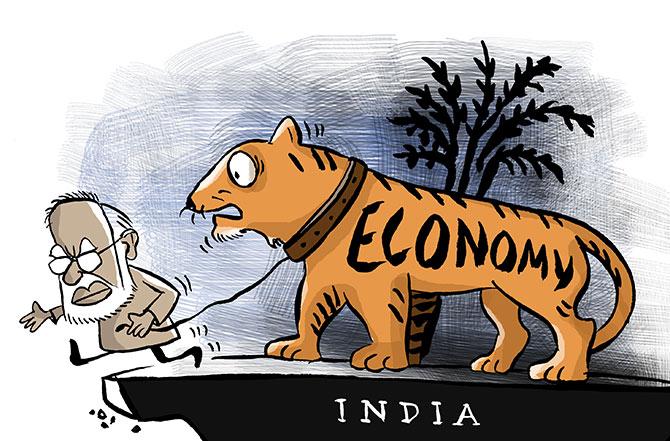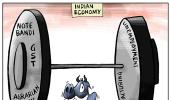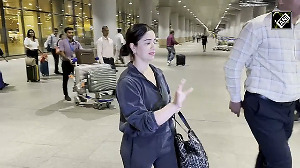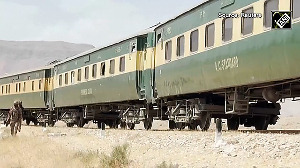Niti Aayog's plan to create a New India' in less than four years should invite scepticism, argues T N Ninan.
Illustration: Uttam Ghosh/Rediff.com

One of the features of the Modi government is its willingness to set ambitious targets for various programmes, and then to make a determined effort to achieve the goals set.
Such ambition is amply in evidence in the document that the NITI Aayog has released, Strategy for New India@75.
By definition, anything that hopes to create a 'New India' in less than four years (by Independence Day in 2022) should invite scepticism.
Still, the details are worth exploring.
The overarching objective is to deliver 9% to 10% GDP growth in 2022-2023.
To get there, a number of sub-targets are laid out.
How realistic are these?
To find out, sample some of what is laid out (comments are in italics):
- Double the rate of manufacturing growth, from 7.7%.
- Accelerate the growth of the mining sector from 3% in 2017-2018 to 14% with an average growth rate of 8.5% during 2018 to 2023.
- Provide irrigation to all farms.
- Expand airport capacity more than five times to handle one billion trips a year.
- Double government spending on education to 6% of GDP. (This is a hoary chestnut.)
- Increase the proportion of formally skilled labour from the current 5.4% of the workforce to at least 15 per cent. (This translates into about 10 million workers being skilled every year.)
- Raise the tax-GDP ratio from the 16% to 17% range over the last several years to 22%.
- Increase public investment from 4% to 7% of GDP. (Question: While farm loan waivers proliferate?)
- Increase India's share in global international tourist arrivals from 1.18% to 3%.
- But (in seeming contradiction), increase the number of foreign tourist arrivals from 8.8 million to only 12 million.
- Double the length of national highways to 200,000 km by 2022-2023 from the existing 122,000 km. (Actually, that increase would be 64% and would involve building 60 km of national highways every day, over and above the construction of state highways and other roads.).
- Reduce the number of road accidents and fatalities by 50% by 2020, while also achieving zero fatalities on the railways.
- Achieve 100% electrification of broad gauge track, from 40% cent in 2016-2017.
- Take R&D expenditure from 0.7% to 2% of GDP.
- For mining, double the area explored from 10% of the obvious geological potential area to 20%.
- Reduce the turnaround time at major ports from about 3.44 days (2016-2017) to the global average of 1-2 days.
- Also, reduce the border compliance time to 24 hours for exports and to 48 hours for imports by 2020.
- Deliver all government services at the state, district, and gram panchayat levels digitally by 2022-2023, thereby eliminating the digital divide.
Separately from these physical targets, there is a whole range of policy prescriptions in every sector.
It is not clear whether these are merely exhortations, in the style of the annual Economic Surveys and the old five-year Plans, or required to achieve the stated targets.
Still, here are some of the policy prescriptions:
- Put in place an economy that is predominantly formal.
- Exit central public sector enterprises that are not strategic in nature...
- For larger CPSEs, the goal should be to create widely held companies by offloading stake to the public to create entities where no single promoter (including the government?) has control.
- Privatise State power distribution utilities.
- Rationalise power tariffs to ensure global competitiveness of Indian industries. (That means high industrial power tariffs will no longer subsidise agricultural and domestic powers users?)
- Revisit rail tariffs, to make the passenger and freight segments sustainable.
- Freight tariffs should be competitive with the cost of road transportation. (Sustainability may conflict with competitiveness.)
- Abolish the Essential Commodities Act.
Some years ago, when Atal Bihari Vajpayee as prime minister was presented by McKinsey with a similarly ambitious set of goals, his pithy response was: 'Yeh sab kaise hoga? (How will all this happen?)'
The old Scottish saying was ruder: If wishes were horses, beggars would ride.












 © 2025
© 2025